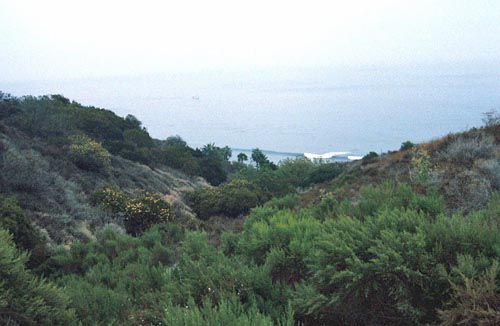Plants adapted to this biome tend to be less than a meter
tall,
and relatively shrubby in appearance. They have many of the
characteristics of desert plants - adaptations to help them survive the hot dry
summers. Many are annuals, flowering briefly after winter rains, then
surviving the dry summer in the form of seeds. The perennial forms tend to
have evergreen leaves, but the leaves are often small. The may be
curled,
with the stomata hid among numerous hairs (trichomes) on the bottom, concave
side of the leaf. Here the stomata are protected from the hot sun and the
drying winds. Many of the plants will contain numerous volatile chemicals
such as turpentine; these chemicals deter herbivores (growth may be slow in such
a climate and investment in chemicals to deter herbivores is more beneficial
than it would be in a climate where new leaves can easily be grown). Many
of these chemicals burn fiercely and the plant communities are termed pyrogenic
for their ability to burst into flame. Needless to say many species are
fire resistant, either by virtue of underground roots or thick heavy bark such
as the cork trees in the Mediterranean.
|  |